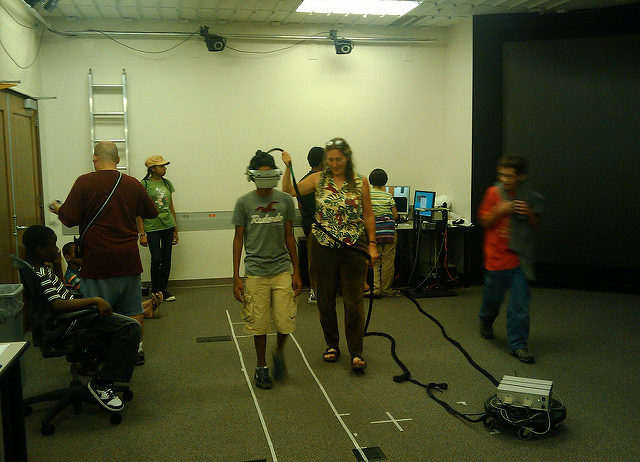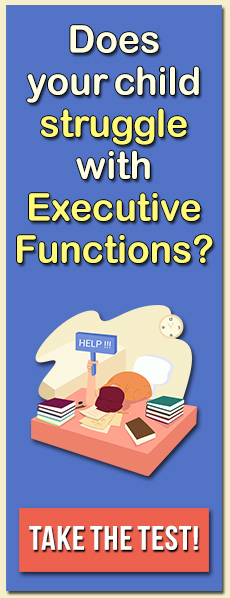The most common method for treating children with ADHD is through the use of psycho-stimulant medications. Medications such as Ritalin, Adderall, and Concerta can be highly effective in reducing impulsivity and enhancing focus and concentration. Yet many parents and pediatricians are reluctant to use medication to treat kids with ADHD and prefer behavioral strategies. Unfortunately, most of these behavioral strategies are only moderately successful and typically have a short-term effect on behavior. They are difficult to implement and do not promote generalization of skills from one situation to another. Behavior management interventions are also time and person intensive, requiring ongoing observation and feedback from adults in a child’s environment.
What if we could use a simpler, natural, real environment to improve self-control and attention skills in children with ADHD? There is increasing evidence that we may be able to use virtual reality to treat ADHD in children and that it might shore up some of the shortcomings of current behavior management strategies.
Virtual reality can create an interactive world through computer-generated sensory perceptions to help children feel as if they are actually in a real-world environment. Children’s brains conclude that they are in the surroundings, and the children feel as if they are present and respond in a realistic fashion. This is powerful stuff, particularly for kids with ADHD, who benefit from immediate and multi-sensory feedback, high levels of stimulation, and point-of-performance consequences. Effective virtual reality is able to respond immediately in a realistic fashion to a child’s behavior in the virtual world.
One of the most difficult tasks with kids with ADHD is to grab and sustain their attention. Virtual reality, to an even greater extent than traditional video-game play, has the potential to do that. The immersive environment of virtual reality can promote sustained focus and attention, although we need to keep in mind that some kids with ADHD could run the risk of over-immersion and that these kids may struggle to leave it.
Virtual reality can also provide an environment that may be particularly useful for kids with ADHD. For one thing, there are opportunities for repeated practice of new skills in an engaging and motivating world. Kids with ADHD who may be averse to failure due to their experiences at school may be more willing to accept the private feedback of virtual reality. They may also be more apt to use the trial-and-error instructional strategies that can be built into virtual reality as a tool for learning.
Additionally, virtual reality may help in creating specific game scenarios that reward the application of skills such as response inhibition and emotional control. Practice opportunities for delaying gratification and moderating hyperactivity in virtual reality can also be helpful. There is a sense that the immediacy and realistic feedback in virtual reality may make it a more powerful tool for children with ADHD whose impulsive behavior is most problematic. VR gaming that shows kids “losing lives” and getting “less health” for impulsive behavior in a more realistic environment may help them better regulate their behavior. However, the more cognitive component of ADHD (requiring focus, planning, and flexibility skills) might be better served by traditional video games that use puzzles, action, or adventure games.
Research is limited on using virtual reality to treat ADHD. However, a few studies show some promise. One study utilized a time simulator to help children with ADHD with time-management skills and was very effective in doing so. Other studies have demonstrated VR as an effective tool for helping to increase environmental awareness in kids using dangerous traffic situations, and enhancing attention using cognitive training tasks. There are currently many private companies and universities that are exploring the use of video games and virtual reality as a treatment for ADHD, including Project: EVO. Improving the social skills of kids with ADHD, using it in conjunction with neurofeedback, and employing it as a tool for coaching individuals with ADHD are all innovative uses of VR for kids with ADHD.
My perspective on VR as a tool for treating ADHD is that it has promise for training skills such as inhibition and extending attention that can be applied across more than one situation. One of the advantages of VR is that children can be exposed to dozens of virtual environments with varying demands that do not require them to go from place to place. Nor do these different scenarios require a coach or counselor who participates in all of the training. Given the difficulty kids with ADHD have in generalizing skills from one setting to another and their need for repeated practice (which the immersive environment of virtual reality can promote), VR has the potential to be a powerful tool to treat ADHD.
What do you think of virtual reality as a treatment for ADHD? Does your child with show an increased engagement or interest in VR? What are some of the games you like to play using VR kits? Tell us in the comments or come talk to us on Facebook.
Featured image: Flickr user Marle Janssen






My son just got a VR for Christmas and loves it! I’m am fascinated by the possibility that he can boost skills with it as well. Can’t wait for more studies on this and for some tools to hit the market.
Penny Williams
Author of “The Insider’s Guide to ADHD,” “What to Expect When Parenting Children with ADHD,” and “Boy Without Instructions”
Parent of 2e teen with ADHD, autism, and LDs
ParentingADHDandAutism.com
to be honest I am not sure if the technology is secure enough or not. actually, I am confused about that, if the children can control this device properly or not. can you please share the proper guidance for children?
Virtual Reality as a Tool to Treat ADHD in Children. The most widely recognized strategy for treating kids with ADHD is using psycho-stimulant prescriptions. Drugs, for example, Ritalin, Adderall, and Concerta can be very viable in diminishing impulsivity and upgrading center and fixation.